Science Fiction
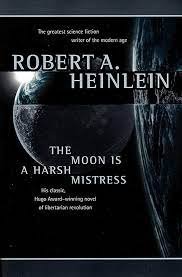
21. The Moon is a Harsh Mistress
Buy on Amazon"The Moon is a Harsh Mistress" by Robert A. Heinlein is a science fiction novel set in a lunar colony that rebels against Earth's authority. The story follows Manuel "Manny" Garcia O'Kelly-Davis, a computer technician, and his sentient computer, HOLMES IV, as they join a revolutionary movement seeking lunar independence. The novel explores themes of liberty, self-governance, and the challenges of a burgeoning society. Heinlein's work is known for its exploration of political philosophy and individualism, set against the backdrop of a lunar revolution that questions the dynamics between a colony and its Earthly rulers.
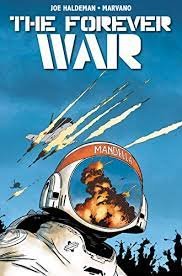
22. The Forever War
Buy on Amazon"The Forever War" by Joe Haldeman is a military science fiction novel that follows the journey of soldier William Mandella through a future interstellar conflict. Due to time dilation caused by near-light-speed travel, Mandella experiences the disorienting effects of relativity, witnessing centuries pass on Earth while only aging a few years. The novel explores themes of war's futility, the alienating impact of time, and the psychological toll on soldiers. Haldeman's work is a powerful commentary on the human cost of war, blending social commentary with a gripping narrative that spans across centuries and galaxies.
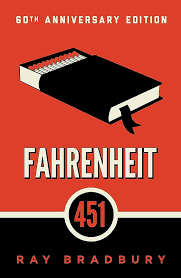
23. Fahrenheit 451
Buy on Amazon"Fahrenheit 451" by Ray Bradbury is a dystopian novel set in a future society where books are banned and "firemen" burn any that are found. The protagonist, Guy Montag, is a fireman who begins to question the suppression of knowledge and intellectual freedom. As he rebels against the oppressive regime, the novel explores themes of censorship, conformity, and the power of literature. Bradbury's work serves as a cautionary tale about the dangers of a society that suppresses critical thinking and the profound impact of literature on individual and collective consciousness.
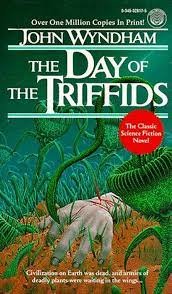
24. The Day of the Triffids
Buy on Amazon"The Day of the Triffids" by John Wyndham is a classic science fiction novel that tells the story of Bill Masen, who wakes up to find the majority of the world's population blinded by a comet shower. In this post-apocalyptic world, he must navigate through the dangers posed by Triffids—genetically engineered, venomous plants capable of walking. The novel explores themes of survival, the consequences of scientific experimentation, and the fragility of civilization. Wyndham's work is a compelling tale of a world in chaos, where humanity faces not only the loss of sight but also the threat of a deadly and mobile plant species.
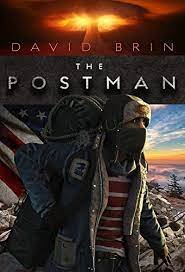
25. The Postman
Buy on Amazon"The Postman" by David Brin is a post-apocalyptic science fiction novel set in a world devastated by war and chaos. Gordon Krantz, a survivor, stumbles upon a postal worker's uniform and begins a journey impersonating a postman. As he brings hope through the delivery of letters, he inadvertently inspires a movement to rebuild society. The novel explores themes of the importance of communication, the resilience of humanity, and the power of symbols in times of crisis. Brin's work is a reflection on the transformative nature of small acts and the role of storytelling in shaping the human experience.
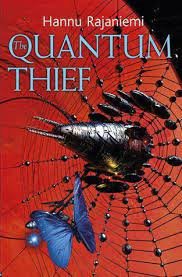
26. The Quantum Thief
Buy on Amazon"The Quantum Thief" by Hannu Rajaniemi is a space opera that follows master thief Jean le Flambeur as he navigates a futuristic, post-singularity solar system. Recruited for a heist that involves breaking into a quantum prison, Jean encounters advanced technologies and enigmatic characters. The novel explores themes of privacy, identity, and the impact of technology on society. Rajaniemi's work is known for its complex plot, high-tech concepts, and a blend of hard science fiction with elements of heist and adventure, creating a compelling narrative that challenges conventional ideas about reality and consciousness.
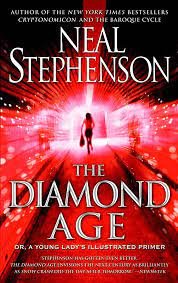
27. The Diamond Age
Buy on Amazon"The Diamond Age" by Neal Stephenson is a cyberpunk science fiction novel set in a future world where nanotechnology has revolutionized society. The story follows Nell, a young girl who comes into possession of a powerful interactive book, the "Young Lady's Illustrated Primer." As Nell grows, the Primer educates and guides her through a tumultuous world of political intrigue and technological advancements. The novel explores themes of education, cultural evolution, and the societal impact of advanced technology. Stephenson's work is celebrated for its imaginative world-building, intricate plot, and insightful commentary on the intersection of technology and culture.
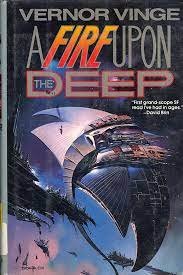
28. A Fire Upon the Deep
Buy on Amazon"A Fire Upon the Deep" by Vernor Vinge is a space opera that unfolds across a vast galaxy with a unique cosmological structure. The narrative involves the accidental release of a malevolent superintelligence known as the Blight. As it spreads, civilizations must grapple with the impending threat. The novel explores themes of artificial intelligence, interstellar communication, and the consequences of tampering with advanced technologies. Vinge's work is notable for its ambitious scope, intricate alien races, and the exploration of the impact of information technology on the fabric of societies across the galaxy.
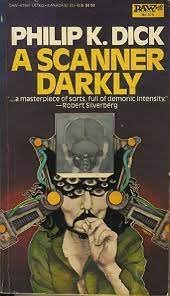
29. A Scanner Darkly
Buy on Amazon"A Scanner Darkly" by Philip K. Dick is a dystopian science fiction novel set in a near-future America. Undercover narcotics agent Bob Arctor investigates the drug Substance D, which causes a split personality. As Arctor becomes addicted to the drug, he struggles to maintain his identity. The novel explores themes of surveillance, the nature of reality, and the impact of drug abuse on the human psyche. Dick's work is a mind-bending exploration of paranoia and the blurred boundaries between the self and society in a world where technology and drugs intertwine in unsettling ways.
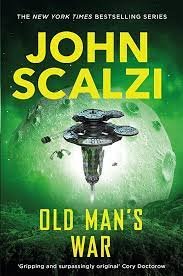
30. Old Man's War
Buy on Amazon"Old Man's War" by John Scalzi is a military science fiction novel set in a distant future where elderly individuals are recruited into the Colonial Defense Forces to defend human colonies in space. Protagonist John Perry undergoes a rejuvenation process, obtaining a new, genetically enhanced body. The novel explores themes of identity, mortality, and the moral complexities of warfare. Scalzi's work combines action-packed military elements with philosophical reflections on the nature of humanity, creating a compelling narrative that challenges conventional ideas about aging, sacrifice, and the ethics of interstellar conflict.
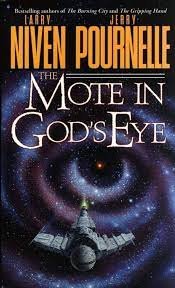
31. The Mote in God's Eye
Buy on Amazon"The Mote in God's Eye" by Larry Niven and Jerry Pournelle is a classic science fiction novel set in a distant future where humanity explores the stars. The story follows the crew of the starship MacArthur as they encounter an alien species known as the Moties. The Moties' society and intentions pose complex challenges, leading to a tense diplomatic situation. The novel explores themes of first contact, cultural misunderstandings, and the consequences of technological advancement. Niven and Pournelle's work is praised for its intricate world-building, realistic depiction of space exploration, and thought-provoking exploration of the dynamics between alien species.
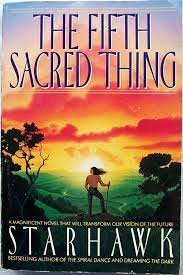
32. The Fifth Sacred Thing
Buy on Amazon"The Fifth Sacred Thing" by Starhawk is a dystopian fantasy novel set in a future San Francisco divided between a utopian, nature-based community and a militaristic regime. As the authoritarian government threatens the city, a diverse group of characters from both sides must unite to resist tyranny. The novel explores themes of environmentalism, social justice, and the power of community activism. Starhawk's work is known for blending elements of magical realism with political and ecological themes, creating a rich narrative that reflects on the complexities of societal conflict and the potential for transformative change.
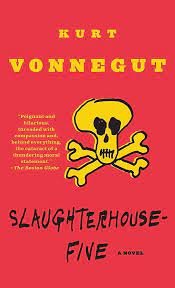
33. Slaughterhouse-Five
Buy on Amazon"Slaughterhouse-Five" by Kurt Vonnegut is an anti-war science fiction novel that follows the experiences of Billy Pilgrim, a soldier who becomes "unstuck in time." The narrative moves back and forth through key moments in Billy's life, including his time as a prisoner of war in Dresden during the firebombing of World War II. The novel explores themes of free will, the absurdity of war, and the psychological trauma of violence. Vonnegut's work is celebrated for its unconventional structure, dark humor, and poignant reflections on the human condition in the face of senseless violence.
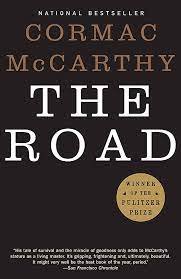
34. The Road
Buy on Amazon"The Road" by Cormac McCarthy is a post-apocalyptic novel that tells the harrowing journey of a father and his young son through a desolate, ash-covered landscape. In a world stripped of civilization, the duo faces scarcity, moral challenges, and the constant threat of cannibalistic survivors. McCarthy's sparse, poetic prose emphasizes the bond between parent and child, while exploring themes of survival, human nature, and the enduring hope for goodness in the bleakest circumstances. "The Road" is a haunting and emotionally intense exploration of the resilience of the human spirit in the face of an utterly devastated world.
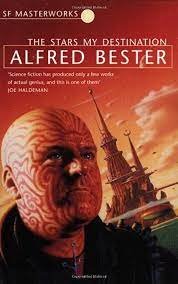
35. The Stars My Destination
Buy on Amazon"The Stars My Destination" by Alfred Bester is a classic science fiction novel that follows the story of Gulliver Foyle, a man left for dead in the vastness of space. Fueled by revenge, Foyle transforms into a ruthless and resourceful figure seeking those who abandoned him. The narrative explores themes of revenge, identity, and the potential for transformation. Bester's work is known for its innovative narrative style, incorporating elements of surrealism and psychological depth. "The Stars My Destination" is celebrated for its influence on the cyberpunk genre and its examination of the consequences of unchecked human ambition.
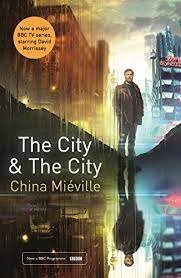
36. The City & The City
Buy on Amazon"The City & The City" by China Miéville is a speculative fiction novel set in two overlapping cities, Besźel and Ul Qoma, occupying the same physical space but existing in parallel. Inspector Tyador Borlú investigates a murder that breaches the strict separation between the two cities. The novel delves into themes of perception, cultural conditioning, and the power of collective belief. Miéville's work combines elements of mystery and urban fantasy, offering a unique exploration of the ways in which societal constructs shape our reality. "The City & The City" is acclaimed for its imaginative premise and intricate world-building.
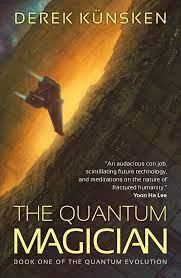
37. The Quantum Magician
Buy on Amazon"The Quantum Magician" by Derek Künsken is a space opera that follows the adventures of con artist and genetically modified human, Belisarius Arjona, as he's hired for a daring heist. Set in a future where various genetically modified human subspecies coexist, the story unfolds against the backdrop of a politically charged universe. The novel explores themes of science, ethics, and the consequences of genetic manipulation. Künsken's work is known for its imaginative world-building, intricate plotting, and a blend of hard science fiction with elements of adventure and intrigue.
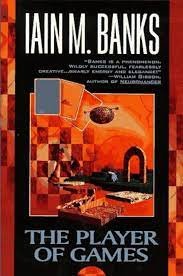
38. The Player of Games
Buy on Amazon"The Player of Games" by Iain M. Banks is a science fiction novel set in the Culture, a vast interstellar utopian society. Jernau Morat Gurgeh, a skilled player of games, becomes bored with his idyllic life and is recruited to participate in a game of strategy and intrigue with a less advanced and warlike civilization. The novel explores themes of cultural clashes, the impact of games on society, and the ethical implications of intervention. Banks' work is celebrated for its rich world-building, complex characters, and thought-provoking exploration of utopian ideals in a technologically advanced future.
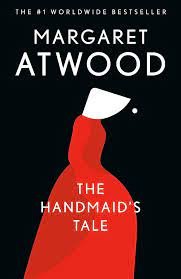
39. The Handmaid's Tale
Buy on AmazonThe Handmaid's Tale" by Margaret Atwood is a dystopian novel set in the theocratic Republic of Gilead, where a totalitarian regime has subjugated women. The story follows Offred, a Handmaid forced into reproductive servitude, as she navigates the oppressive society. Atwood's work explores themes of gender oppression, loss of freedom, and the consequences of religious extremism. The novel is a chilling portrayal of a future where fundamentalist ideologies shape the lives of women, raising questions about power, autonomy, and resistance in the face of oppressive regimes.
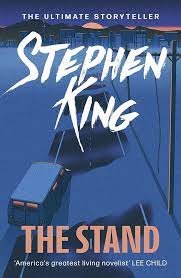
40. The Stand
Buy on Amazon"The Stand" by Stephen King is an epic post-apocalyptic novel that depicts a world devastated by a deadly pandemic. As the survivors grapple with the aftermath, two factions led by the benevolent Mother Abagail and the malevolent Randall Flagg emerge. The narrative follows a diverse cast of characters as they navigate the challenges of rebuilding society and face a supernatural showdown between good and evil. King's work explores themes of morality, resilience, and the consequences of societal collapse, creating a sprawling and immersive tale that combines horror, fantasy, and human drama.